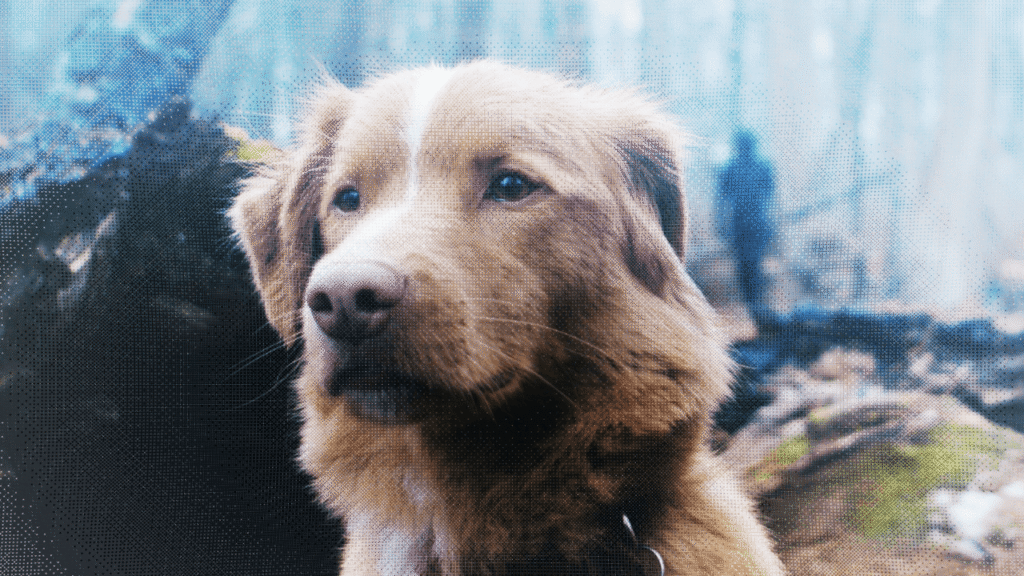This is an edition of the weekly newsletter Tap In, GQ senior associate editor Frazier Tharpe’s final word on the most heated online discourse about music, movies, and TV. Sign up here to get it free.
Spooky Season ‘25 kicked off with one of the most emotionally manipulative horror movies we’ve seen in awhile: Good Boy, from first-time feature writer-director Ben Leonberg, is a haunted house story told from the perspective of an impossibly cute, increasingly stressed retriever named Indy, who gets hip to strange things happening that his owner is too preoccupied to notice. Indy is so adorable that from the minute the trailer hit, ordinarily-bloodthirsty horror fans suddenly became very concerned about whether or not the dog dies, as so many pets in the genre tend to.
Indy is played by Indy, Leonberg’s actual dog. In a conversation he and I had after I screened the film, he revealed the unique methods he used to deliver what is immediately one of the most striking canine performances in the overall pantheon, discussed the story’s overall themes of mortality, and (yes) weighed in on Indy’s fate. (Spoilers follow, but for anyone curious to read who hasn’t seen—and hasn’t already Googled “does the dog die in Good Boy”—we’ll add a second warning before the ending talk really starts.)
How could you do this to us, man? What a truly harrowing concept—putting a dog in danger for an hour’s worth of scares.
I think it proves just how well horror films have trained audiences to worry. Whether you watch many [horror movies] or not, I feel like you’re still aware of this trope—the family buys a house, the deal is too good to be true, the dog won’t go into the basement or he’s barking at the creepy neighbor. And usually in most films, that dog doesn’t make it out of the first act. But for us, we tell the entire story of Indy—and the [existence of] doesthedogdie.com proves the power of animals in cinema.
I don’t think I’ve ever seen this kind of pre-release panic or anxiety for a movie—as soon as the poster dropped, that was a trending topic, people asking if Indy dies.
“Does the dog die?” And then, “Hey, remember that show Courage the Cowardly Dog?”
Do you remember Courage?
Oh, yeah. I don’t think it was ever consciously front of mind when I was making the film, but it’s certainly something that I thought about. It’s a show I loved, certainly watched as a kid. So, maybe it was a subtle thing, one of those more psychological influences.
So, how did you kind of come up with this concept to begin with?
I mean, to be as specific as possible. I remember watching Poltergeist for the millionth time, and that film opens with a golden retriever wandering through a house, clearly clued into the fact that there’s a haunting about to begin before the humans have caught on. And I thought that somebody should tell a story entirely from that dog’s point of view.
And as I started writing it, to take that trope and apply it more generally. Probably everyone has wondered why their dog barks at nothing in the middle of the night or stares into an empty corner. Their senses are so much more powerful than ours, even if their comprehension is a little simpler. So, I think there’s kind of a very deeply relatable core that we used as the primal DNA of this. And then it was just a challenge of figuring out, how do you actually make the movie? How do you tell the story with a character who has a different kind of intellect and can’t speak?
it’s a good script that really depends on finding the right canine for the job. Did you write it with Indy in mind?
I didn’t set out to make the film with my own dog, and I didn’t get Indy thinking he was going to be my star. As I was writing the film and figuring out how you use point of view and blocking to unfold a narrative, I started making little tests with Indy, because he was my dog. I was just shooting in my own apartment or in the back yard, to figure out things like, How do you put a camera on a character’s face and control their eye line when they don’t know they’re in a movie?
Certainly there are trained actor dogs, but I was trying to avoid the appearance of an animal who’s clearly listening to a trainer off camera. So, it was a very slow decision to figure out that we were going to work with Indy and then also kind of invent this new way to make a movie entirely around him. It’s definitely not the case that he’s trained to be an actor. It’s more that my wife and I learned how to reorganize our lives and make a movie around him. We actually lived in the house you see in the film.


